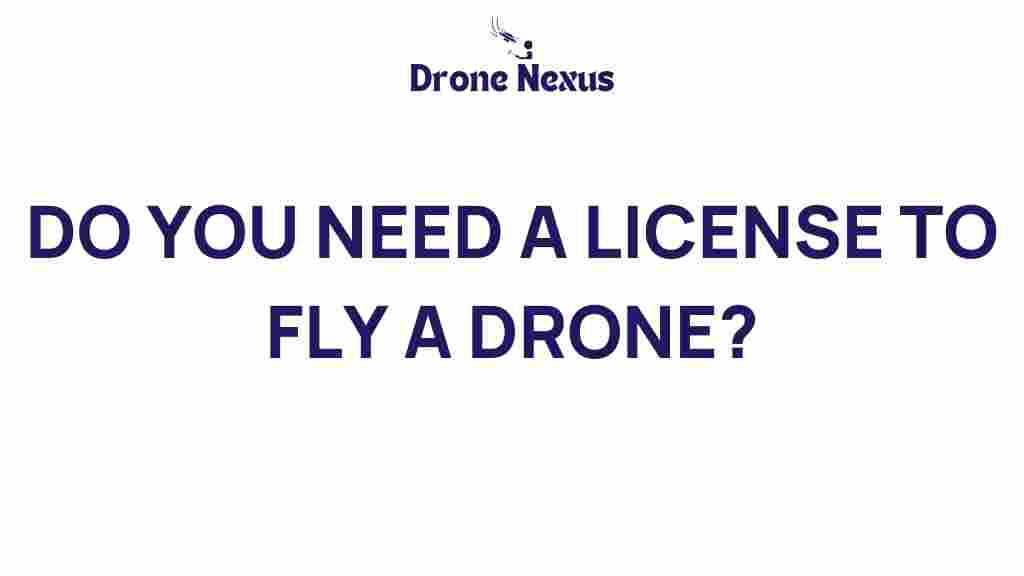Unraveling the Mystery: Do You Need a License to Fly a Drone? – Understanding Drone Regulations
As drones continue to gain popularity for recreational use, commercial applications, and even as a hobby, many potential flyers find themselves asking a crucial question: do you need a license to fly a drone? Understanding drone regulations is essential to ensure compliance and safety. In this article, we will explore the ins and outs of drone licensing, the regulations that govern drone use, and the steps you need to take before taking to the skies.
Understanding Drone Regulations
Drone regulations vary significantly by country and even within regions of a country. In the United States, for example, the Federal Aviation Administration (FAA) manages the rules surrounding drone flights. In contrast, other countries may have their own governing bodies and regulations. Therefore, understanding the specific drone regulations in your area is crucial before flying your drone.
Why Are Drone Regulations Important?
Drone regulations are put in place for several reasons:
- Safety: To protect both the drone operator and the public from accidents.
- Privacy: To prevent invasions of privacy that could occur through unauthorized aerial surveillance.
- Airspace Management: To ensure drones do not interfere with manned aircraft, maintaining the safety and efficiency of the airspace.
- Insurance: Regulations often require liability insurance to cover potential damages caused by drone operations.
Who Needs a License to Fly a Drone?
The necessity of a license to fly a drone largely depends on how you intend to use it. Below, we outline the different scenarios:
Recreational Use
If you plan to fly your drone for fun without any commercial intent, you may not need a formal license, but you must still follow drone regulations. In the U.S., the FAA requires recreational drone pilots to:
- Register their drone if it weighs more than 0.55 pounds (250 grams).
- Fly below 400 feet.
- Keep the drone within visual line-of-sight.
- Give way to manned aircraft.
- Not fly over people or moving vehicles.
Commercial Use
If you intend to use your drone for commercial purposes, such as photography, videography, surveying, or inspections, you will need to obtain a Remote Pilot Certificate from the FAA. The process involves:
- Passing the FAA’s Aeronautical Knowledge Test.
- Being at least 16 years old.
- Being able to read, speak, write, and understand English.
- Passing a background check.
Once you have your certificate, you must also adhere to specific drone regulations for commercial operations, such as keeping your drone within visual line-of-sight and not exceeding 400 feet in altitude.
Step-by-Step Process to Obtain a Drone License
For those who need to obtain a license, follow these steps to ensure compliance with drone regulations:
1. Understand the Requirements
Familiarize yourself with your country’s specific drone regulations. In the U.S., refer to the FAA’s website for up-to-date information.
2. Prepare for the Knowledge Test
Study for the FAA’s Aeronautical Knowledge Test. You can find various online resources, courses, and practice tests to help you prepare.
3. Schedule the Test
Once you feel prepared, schedule a test at a designated FAA testing center. You’ll need to pay a fee for the test.
4. Take the Test
Pass the test to obtain your Remote Pilot Certificate. The test consists of 60 multiple-choice questions.
5. Complete the FAA Form 8710-13
Fill out the FAA Form 8710-13 to apply for your Remote Pilot Certificate. Make sure to provide accurate information.
6. Pass the Background Check
Once your application is submitted, the FAA will conduct a background check. Ensure you have no disqualifying criminal history.
7. Maintain Your Certification
After obtaining your license, comply with the drone regulations and keep your skills current. You may need to renew your certification every two years, including passing a recurrent knowledge test.
Common Drone Regulations Around the World
While regulations can vary, here are some common drone regulations you might encounter globally:
- Registration: Most countries require drones over a certain weight to be registered.
- Altitude Limits: Many countries enforce altitude limits, typically around 400 feet.
- No-Fly Zones: Areas around airports, military bases, and populated regions are often designated as no-fly zones.
- Night Flying: In many places, flying at night is restricted or prohibited without specific permissions.
- Insurance: Some countries mandate liability insurance for commercial drone operations.
Troubleshooting Common Issues with Drone Licensing
If you encounter problems while navigating drone regulations, consider these troubleshooting tips:
Issue 1: Registration Problems
If you experience difficulties registering your drone, ensure that you have all necessary information, such as the drone’s make, model, and serial number. Double-check the submission process and seek assistance from the FAA or relevant authority if needed.
Issue 2: Test Preparation
If you’re struggling to prepare for the knowledge test, consider enrolling in a formal training course or using online resources. Many organizations offer comprehensive study materials.
Issue 3: Certificate Renewal
To avoid issues with your certificate expiration, mark your calendar for renewal reminders. Start preparing for the recurrent test well in advance.
Issue 4: Compliance Confusion
If you’re unsure about specific compliance requirements, refer to the official regulations on the FAA website or consult with local authorities for clarification.
Conclusion
Understanding whether you need a license to fly a drone is critical for both safety and legal compliance. By familiarizing yourself with the specific drone regulations in your area, you can ensure a smooth flying experience. Whether for recreational fun or commercial purposes, adhering to these regulations is essential for responsible drone operation. Always stay informed, keep your skills current, and enjoy the incredible world of drone flying!
For more detailed information on drone regulations, visit the FAA’s official website here.
To further explore drone flying tips and tricks, check out our article here.
This article is in the category Safety and created by DroneNexus Team
